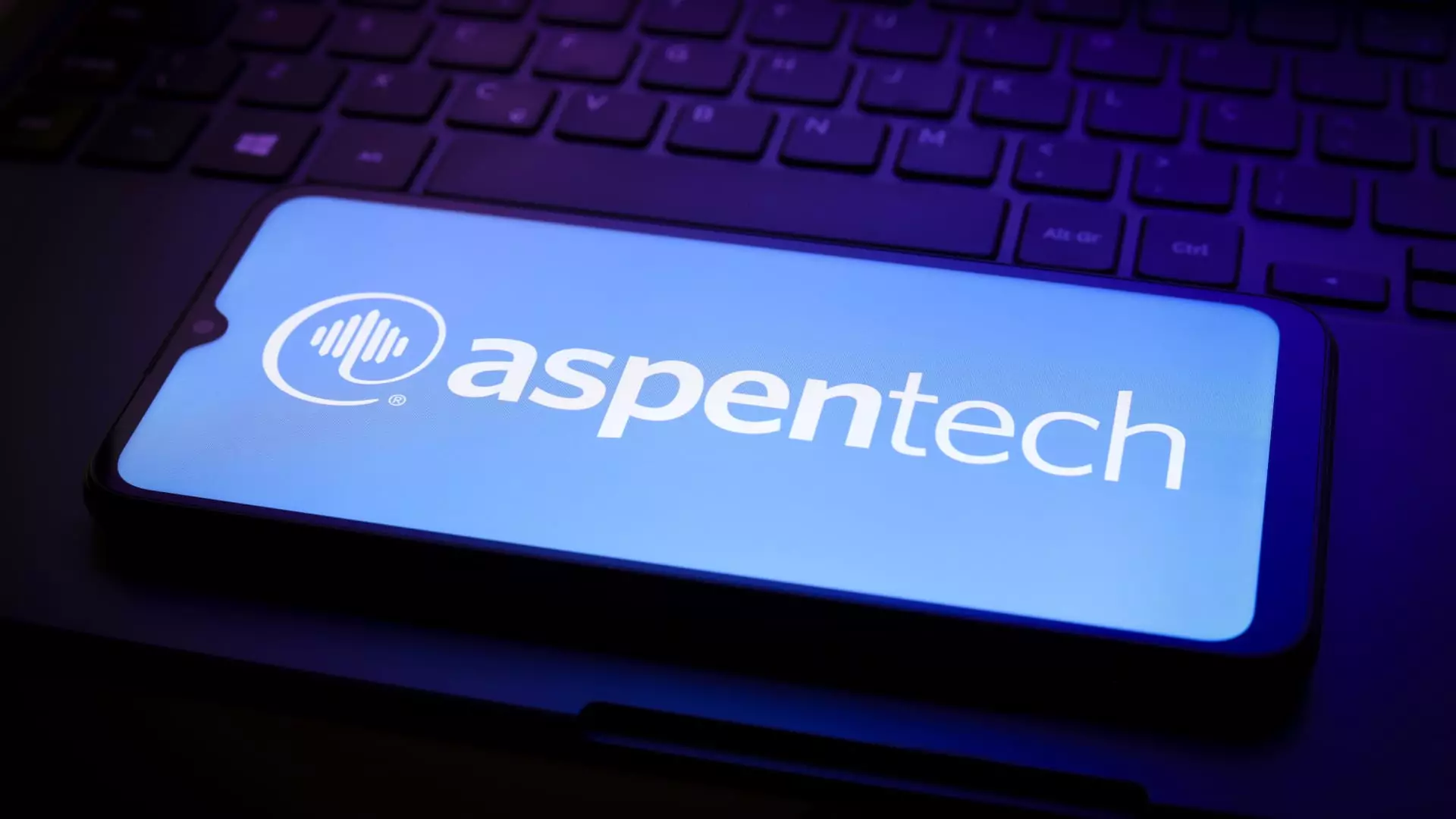In a landscape marked by strategic investments and corporate maneuvering, the ongoing dynamics between Aspen Technology and Emerson Electric presents a compelling study in valuation, governance, and activist investment. Aspen Technology specializes in process optimization software aimed at enhancing operational efficiency for asset-heavy industries, including oil and gas. With its stock price hovering around $265 per share, Emerson is making a bid to acquire Aspen, raising crucial questions about the fairness of this offer and the motivations behind it.
Aspen Technology, known for its comprehensive software solutions, plays a pivotal role in optimizing performance across various sectors, making it a critical player in the oil and gas industry. The company’s software supports everything from supply chain management to predictive maintenance, cementing its status as a leader in process optimization. With a market valuation of approximately $16.8 billion, one would expect any acquisition proposal to reflect not just the current value of the company but also its growth potential and strategic assets.
Notably, Emerson Electric, already a substantial stakeholder with around 57.4% ownership, issued a tender offer to acquire the remaining shares of Aspen Technology at $265 each. On the surface, this might seem like a generous premium considering that it translates into about a 10% increase over the stock’s trading price prior to the offer. However, a deeper examination reveals considerable discontent regarding the adequacy of this valuation.
Enter Elliott Management, an activist investment firm known for its rigorous approach to enhancing corporate governance and unlocking shareholder value. Elliott has recently taken a substantial position in Aspen Technology, acquiring approximately $1.5 billion worth of shares. The firm is advocating against Emerson’s tender offer, arguing that the price does not accurately reflect Aspen’s intrinsic value or future potential, particularly in terms of the operational synergies that could be realized post-acquisition.
Elliott’s reputation for strategic activism is well-earned; the firm has a history of pushing for better governance and transparency in companies, often leading to substantial value creation for shareholders. Its skilled team comprises seasoned analysts and industry specialists, which positions it well to challenge Emerson’s intentions and the pricing strategy being implemented in this scenario.
Examining Emerson’s $265 tender offer further illuminates why Elliott and other stakeholders may be bullish on Aspen’s future. Notably, past transactions in similar sectors have yielded much higher premiums. For instance, Schneider Electric’s acquisition of Aveva involved a 41% premium over the stock’s undisturbed price before the acquisition interest was made public. Given the historical trends surrounding acquisitions in the technology sector—particularly those that seek strategic synergies—the offer being presented by Emerson appears disproportionately low.
In fact, given the operational synergies and technological access Emerson would gain, some analysts suggest a fair price could exceed $350 per share. This stems from the substantial benefits Emerson would unlock through a full acquisition of Aspen’s software capabilities and intellectual property, which only an all-encompassing purchase could provide.
Adding layers to this complex narrative is the governance aspect of Aspen Technology’s board and the special committee formed to evaluate Emerson’s offer. Critics are quick to point out that two out of the three directors on this committee are designated by Emerson, raising concerns about the objectivity of the assessment process. This situation highlights the risks associated with corporate structures that allow for potential conflicts of interest—where the lines between fiduciary duty and strategic persuasion can blur.
In a pivotal move, the deal requires approval from a majority of disinterested shareholders. This stipulation provides a glimmer of hope for Elliott and other dissenters, as only 21.4% of non-Emerson shareholders need to support the blockade against the deal. Elliott’s 9% stake, combined with the votes of other shareholders like Kayne Anderson, could effectively derail the deal, emphasizing the importance of shareholder engagement and activism in shaping corporate outcomes.
The unfolding saga between Aspen Technology and Emerson Electric serves as a telling microcosm of broader issues in corporate governance, stakeholder engagement, and the complexities of valuation in acquisition scenarios. As the confrontation escalates, both companies face pressure to reassess their strategies and communicate transparently with their shareholders. The ultimate outcome will likely not only shape the future of Aspen Technology but also set precedents for how shareholder interests are balanced against insider control in future corporate maneuvers. As this situation continues to develop, all eyes will be on the evolving discourse between potential acquirers and the activist investors willing to challenge them.

